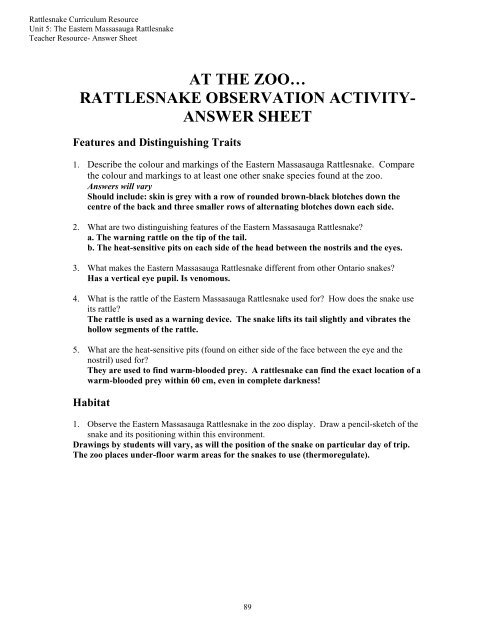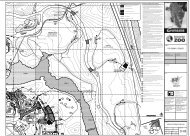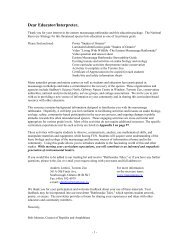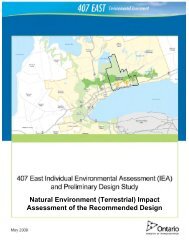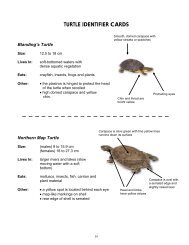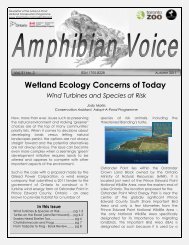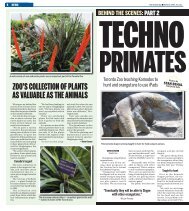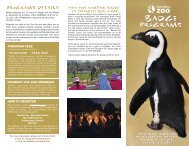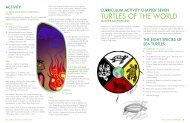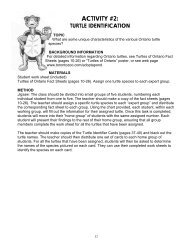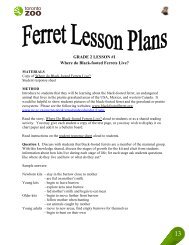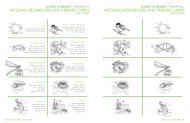UNIT 5 THE EASTERN MASSASAUGA RATTLESNAKE - Toronto Zoo
UNIT 5 THE EASTERN MASSASAUGA RATTLESNAKE - Toronto Zoo
UNIT 5 THE EASTERN MASSASAUGA RATTLESNAKE - Toronto Zoo
You also want an ePaper? Increase the reach of your titles
YUMPU automatically turns print PDFs into web optimized ePapers that Google loves.
Rattlesnake Curriculum Resource<br />
Unit 5: The Eastern Massasauga Rattlesnake<br />
Teacher Resource- Answer Sheet<br />
AT <strong>THE</strong> ZOO…<br />
<strong>RATTLESNAKE</strong> OBSERVATION ACTIVITY-<br />
ANSWER SHEET<br />
Features and Distinguishing Traits<br />
1. Describe the colour and markings of the Eastern Massasauga Rattlesnake. Compare<br />
the colour and markings to at least one other snake species found at the zoo.<br />
Answers will vary<br />
Should include: skin is grey with a row of rounded brown-black blotches down the<br />
centre of the back and three smaller rows of alternating blotches down each side.<br />
2. What are two distinguishing features of the Eastern Massasauga Rattlesnake?<br />
a. The warning rattle on the tip of the tail.<br />
b. The heat-sensitive pits on each side of the head between the nostrils and the eyes.<br />
3. What makes the Eastern Massasauga Rattlesnake different from other Ontario snakes?<br />
Has a vertical eye pupil. Is venomous.<br />
4. What is the rattle of the Eastern Massasauga Rattlesnake used for? How does the snake use<br />
its rattle?<br />
The rattle is used as a warning device. The snake lifts its tail slightly and vibrates the<br />
hollow segments of the rattle.<br />
5. What are the heat-sensitive pits (found on either side of the face between the eye and the<br />
nostril) used for?<br />
They are used to find warm-blooded prey. A rattlesnake can find the exact location of a<br />
warm-blooded prey within 60 cm, even in complete darkness!<br />
Habitat<br />
1. Observe the Eastern Massasauga Rattlesnake in the zoo display. Draw a pencil-sketch of the<br />
snake and its positioning within this environment.<br />
Drawings by students will vary, as will the position of the snake on particular day of trip.<br />
The zoo places under-floor warm areas for the snakes to use (thermoregulate).<br />
89


